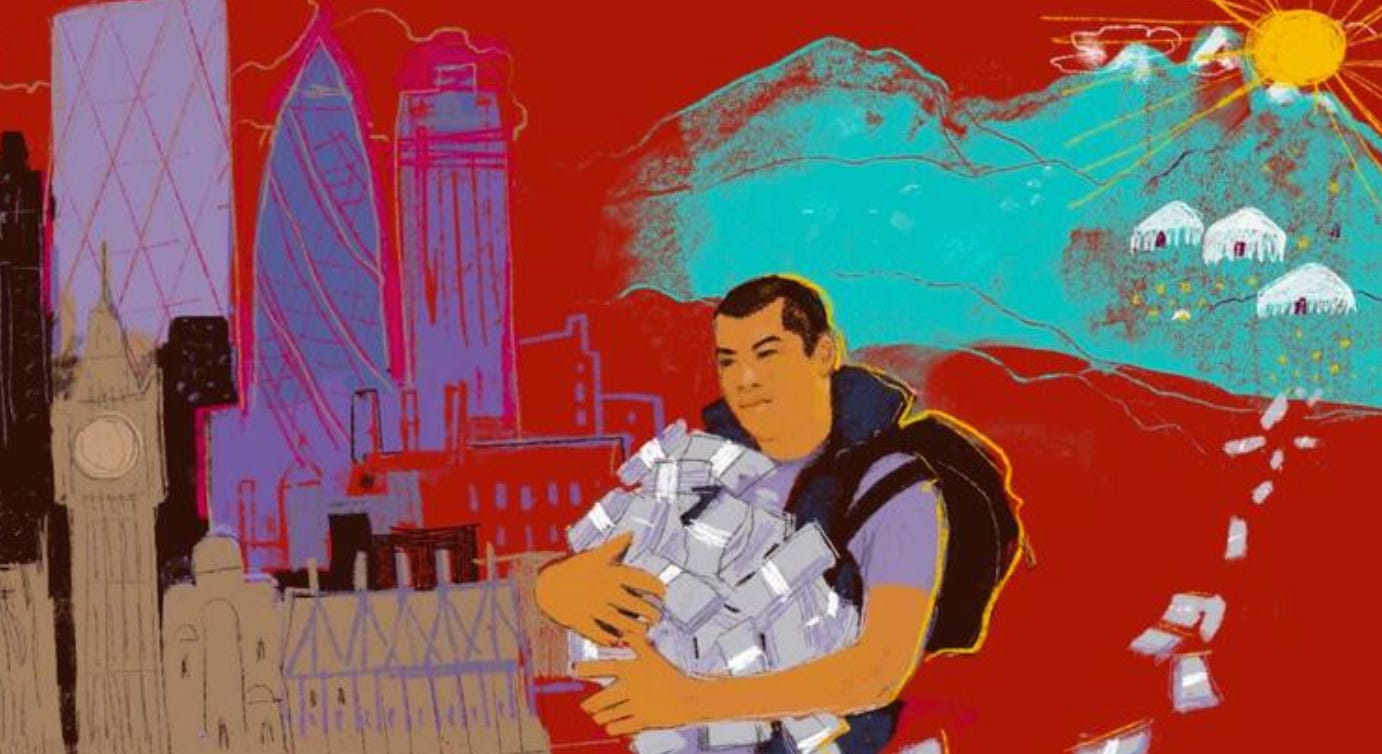Hi everyone,
Remember how I said I would be attending an investigative journalism conference last week? I was in the presence of some of the most brilliant investigative journalists from across the world and I thought, what better way to share this than by adding a brief section in this week’s edition on some of the most fascinating stories they’ve uncovered?
Below are brief descriptions of three investigative pieces I think you might like and below that, as usual, is the news.
1. Dubai uncovered
A data leak on who owned property in Dubai led to this investigative piece that trails and exposes criminals, officials, and sanctioned politicians who poured their money into the emirate. Here’s an excerpt:
«Dubai has an ask-no-questions, see-no-evil approach to commercial and financial regulation, as well as foreign financial crimes,» the group wrote in a 2020 assessment. «It has consequently attracted large financial flows and some of the world’s most high-profile criminals.»
And here’s the full story.
2. Plunder and patronage in the heart of Central Asia
This investigation starts with one informant: a man who told journalists that he had laundered more than 700 million dollars out of Kyrgyzstan. The informant was killed a few months after he came forward with this information but not before he had handed over documents ‘that revealed the massive and systemic plunder of public funds...’ Here’s an excerpt:
“Together, this evidence tells the story of how a vast underground cargo empire run by the Abdukadyrs, a secretive Uighur clan, systematically funneled massive bribes to Kyrgyzstan’s customs service.”
Here’s the full story.
3. The pandemic’s true death toll
In this story, data journalists from The Economist (with the help of a machine learning model) tell a story about the true toll of the pandemic. In this story, they were able to estimate excess deaths from the pandemic based on official data from some countries and other statistical indicators. This is important, especially in countries where official figures are not reliable (cue COVID data for Ethiopia).
The great thing is both the methodology and the coding used in this story are there for inspection. Here’s an excerpt:
“These data make clear that covid-19 has led to the deaths of far more people than official statistics suggest (see our briefing). Measured by excess deaths as a share of population, many of the world’s hardest-hit countries are in Latin America.”
Here’s the full story.
Now to the news.
Negotiations in place with OLA
The Ethiopian government and representatives from the Oromo Liberation Army (OLA) have agreed to come to the negotiating table. The talks are expected to take place this week in Tanzania. The last update I wrote on this was back when the president of the Oromia region, Shimelis Abdisa, called for reconciliation between the government and OLA. At the time, the OLA had said it rejects the idea of a local mediator. Looks like the government listened. Here's an excerpt from the OLA’s press release:
“The Oromo Liberation Army (OLA) acknowledges the statements made by Abiy Ahmed and can confirm that the Ethiopian regime has accepted our terms for peace negotiations, which include the involvement of an independent third-party mediator and a commitment to maintain transparency throughout the process. This is a crucial and positive step towards establishing a lasting peace in the region.”
The full story in English on Addis Standard here, in Amharic on Wazema Radio here, and the press release from OLA here.
Ethiopians caught in the crossfire in Sudan
The conflict in Sudan, between rival factions of the country’s military government - army chief Abdel Fattah al-Burhan (who leads the Sudanese Armed Forces) and his deputy Mohamed Hamdan Daglo (who commands the Rapid Support Forces) is on its 10th day. This has affected the lives of thousands of people including Ethiopians living there. The Ethiopian Embassy announced that there are Ethiopians who lost their lives and have been injured since the conflict began. Overall, estimated civilian deaths are more than 270 while evacuation plans out of the country have been difficult according to this report by Radio France.
Prime Minister Abiy Ahmed has refuted claims by Sudanese media outlets that Ethiopia is on the offensive to take over the Al-Fashaga border area. While this very fertile area has been a source of conflict for over three decades now between the two countries, the Prime Minister says that this is a false narrative intended to create a wedge between the two countries.
The full story on Addis Standard here and the Prime Minister’s tweet (in Arabic) here.
The government is sending half a million women to work in Saudi
The Ethiopian government has announced an initiative to send 500,000 women to work as domestic workers in Saudi Arabia. This is based on the request of the Saudi government according to a report by Al Jazeera. The Ethiopian government says that this will deter those going to Saudi using illegal routes and that they will have guaranteed payments for their work. Additionally (or maybe more importantly?), workers abroad may be able to help boost the economy through remittance.
But advocates and experts say that this is a false promise and that most of the money, ‘ends up in the black-market sinkhole.”
An excerpt from what a migrant rights researcher said in the story:
“Given the lack of access to detention facilities and a likely inability to monitor the workings of such a plan, it’s alarming to learn of the Ethiopian push to promote a scheme to send thousands of people to work there,” she said.
The full story on Al Jazeera here.
New regions face budget deficits
Ethiopia’s two newest regions – Sidama, in 2020, and South West Ethiopia Peoples’ Region, in 2021 – are facing budget deficits according to an in-depth piece by Ethiopia Insight. This is because of a multitude of reasons, one of which is an outdated formula in use for revenue collection and distribution between the federal government and regional states.
Added to this has been the cost of the war, inflation, the postponed census (last conducted 15 years ago), and massive cuts in grants and loans from development partners.
Here’s an excerpt from the story:
“Some regions, such as Afar and Somali, have not been able to fund more than fifteen percent of their expenditure from their own revenue. In more developed regions, like Amhara and Oromia, it has been between twenty and 40 percent. In any case, federal grants fund between 60 and 80 percent of regional budgets and make up around 40 percent of total federal expenditure.”
This article is great if you want to know more about what goes into the calculation for federal grants to regions, where it stands right now, and what steps experts recommend for greater fiscal autonomy. Read it here.
That’s all for this week. I’ll be back next week with more updates!
In the meantime, you can help support my work by forwarding this email to friends and family who might benefit from keeping up with what’s going on.
Note: I go through all the major news outlets, newspapers, online publications, and will at times, include reports, notes on parliamentary sessions, and go through fact-checking websites as well. I try to provide links to both English and Amharic sources, and I usually time-stamp the video I link to unless I think the whole video is relevant.






